Abstract
The inherent pleomorphism of Bacterionema matruchotii resulting from its mode of reproduction was enhanced by temporal effects of culture age and growth condition and by the more lasting effects of rough to intermediate to smooth morphological dissociation. Routine morphological observations with a single growth condition were inadequate to permit unambiguous judgements of culture purity. Multiple criteria were required. Pleomorphism and the undetected presence of contaminants in primary and successive cultures of B. matruchotii can explain the emergence of unrelated bacteria from B. matruchotii reported previously by others and ascribed to genetic instability.
Full text
PDF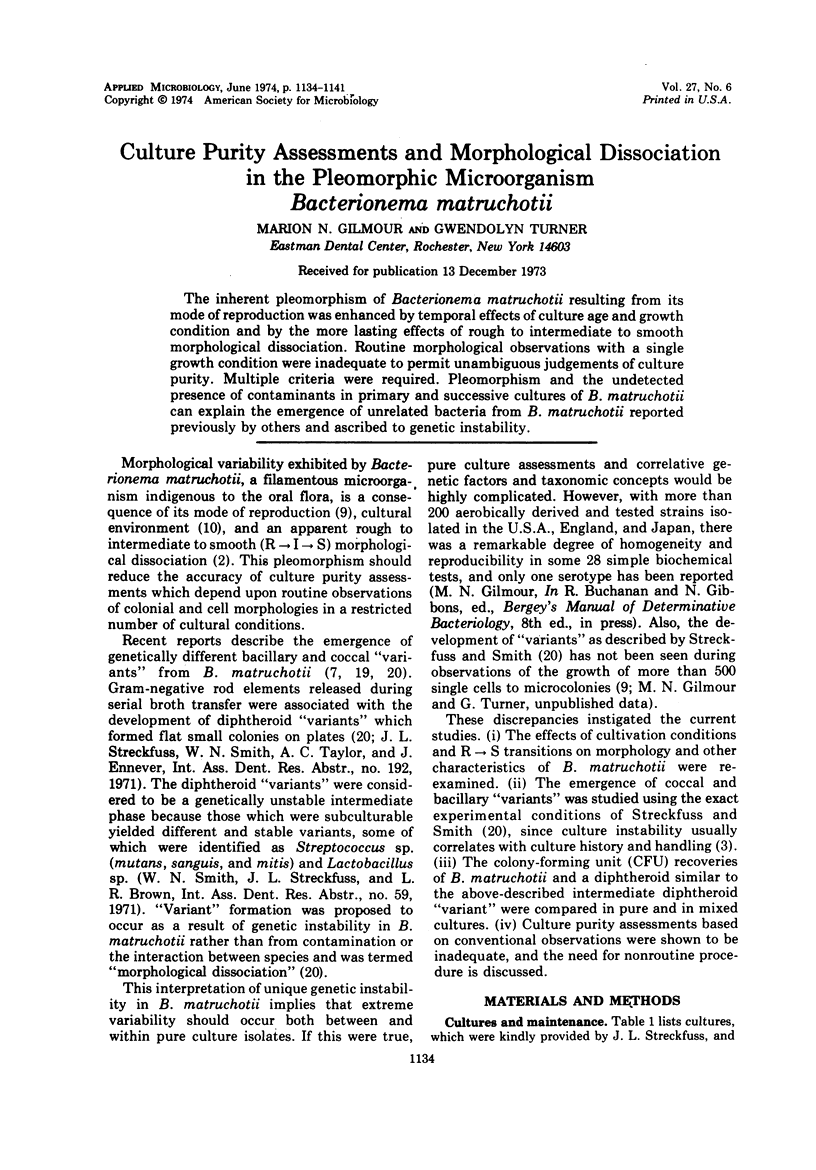
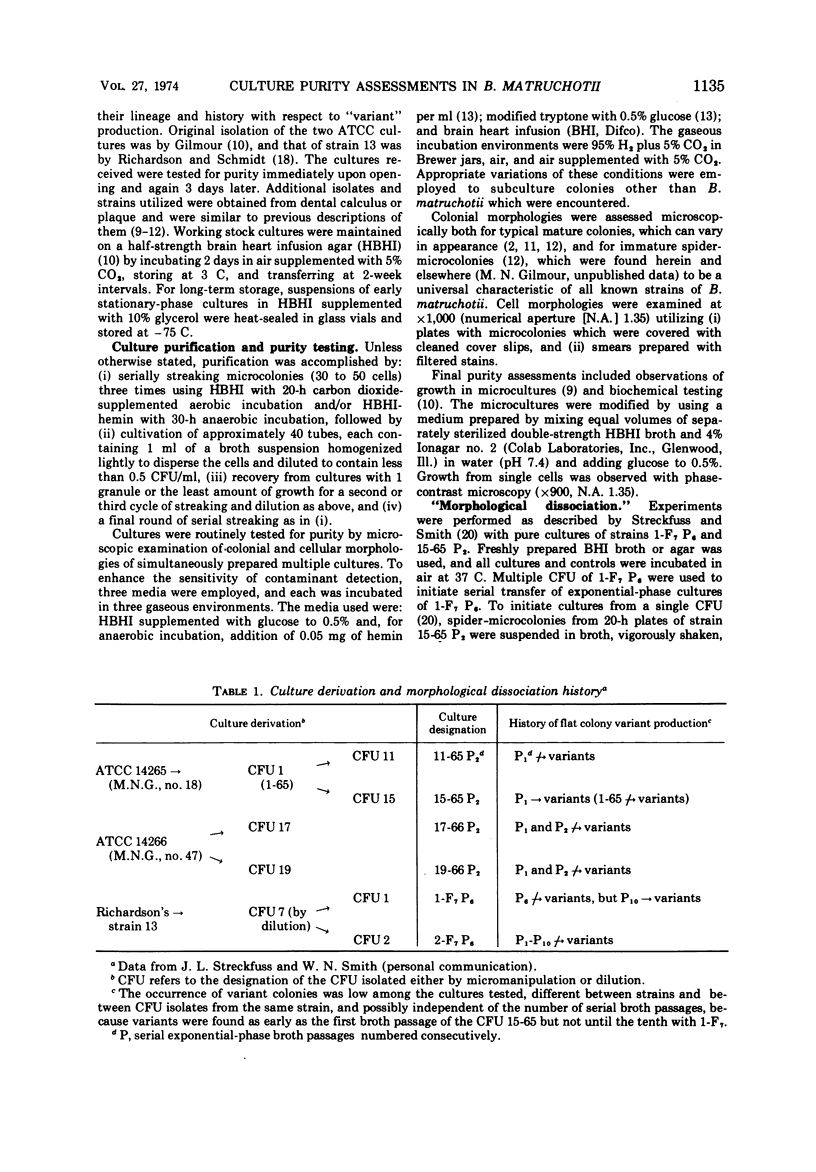
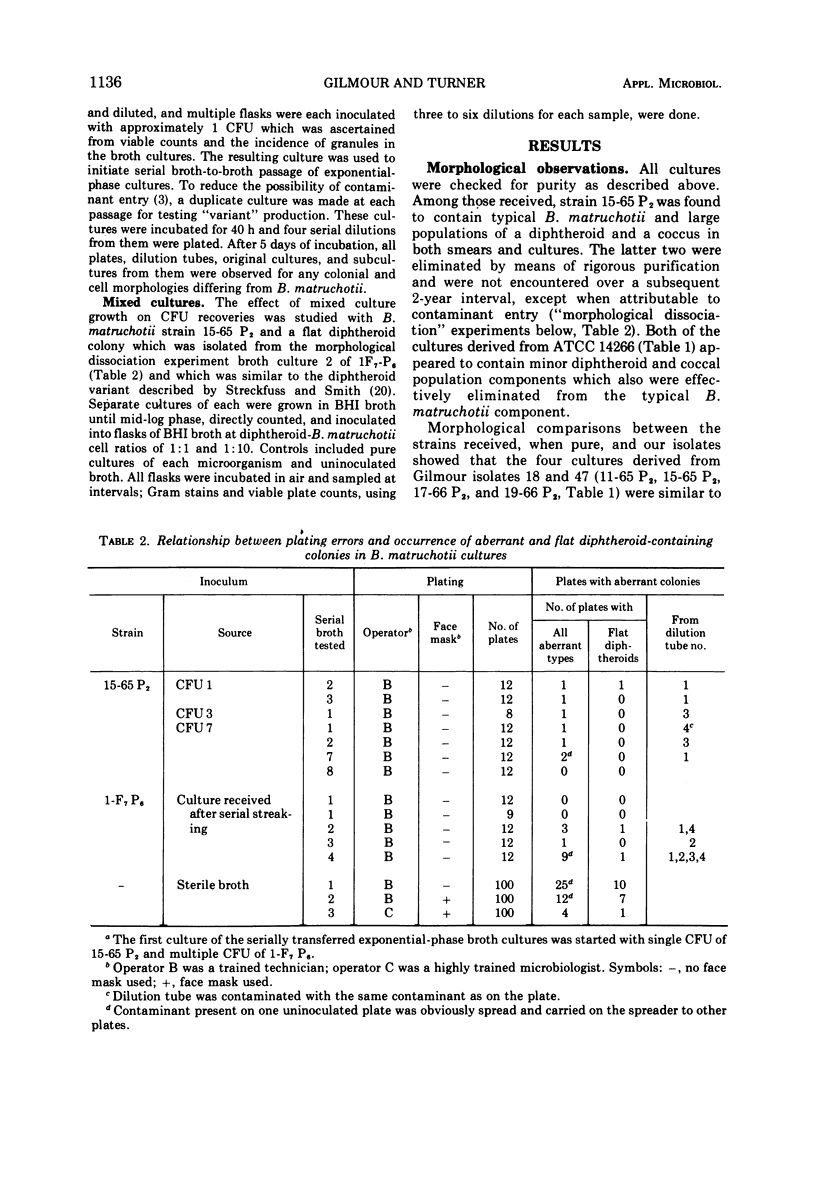
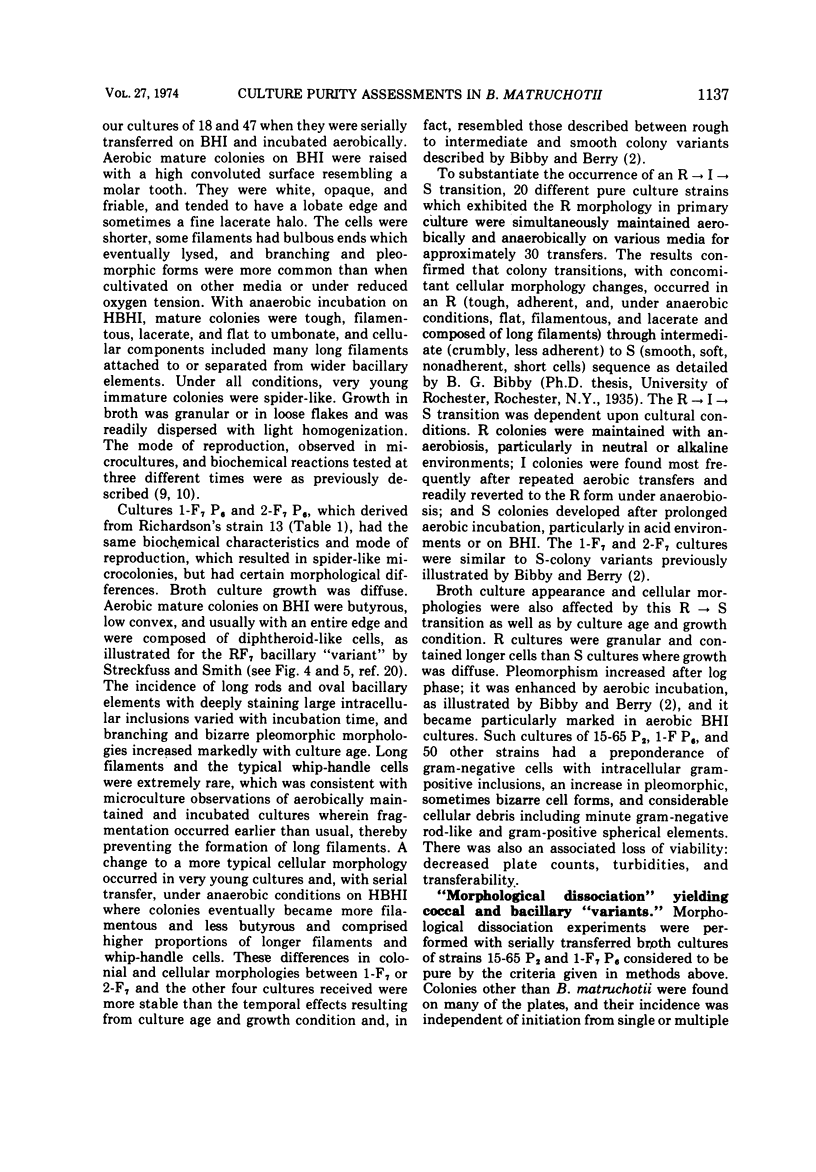
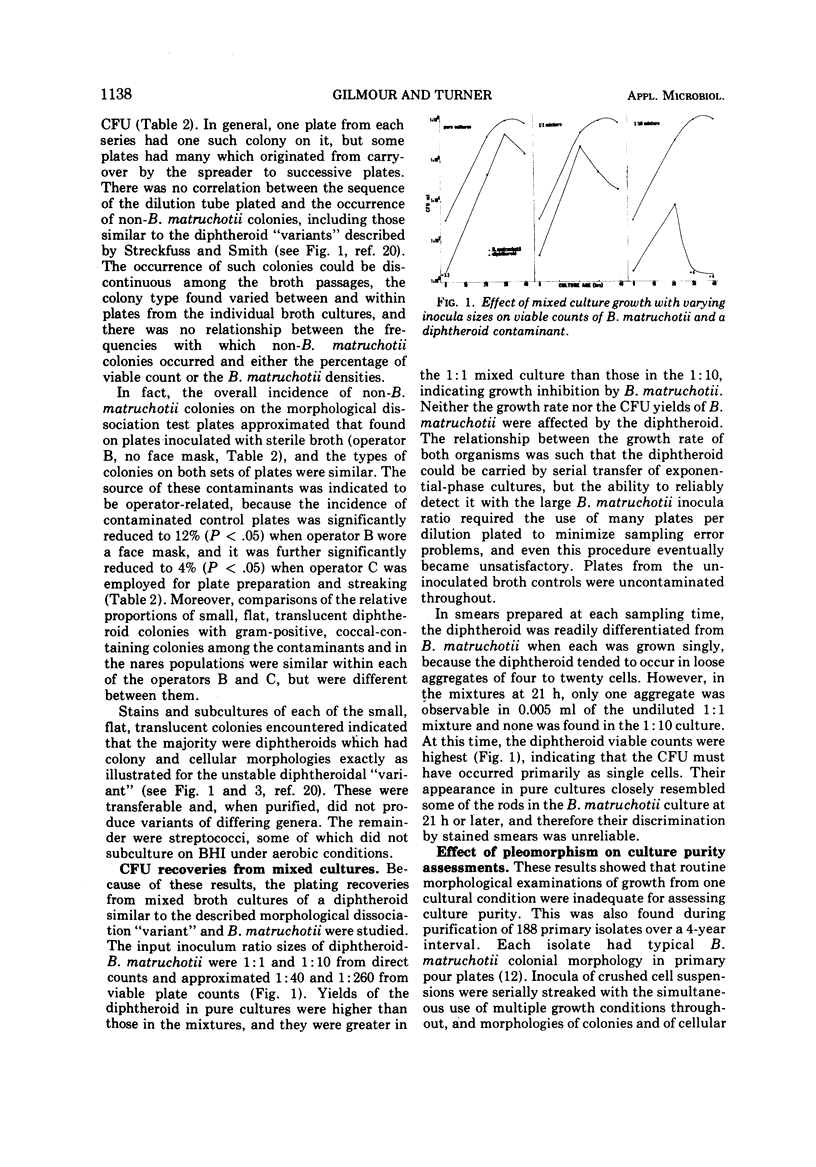

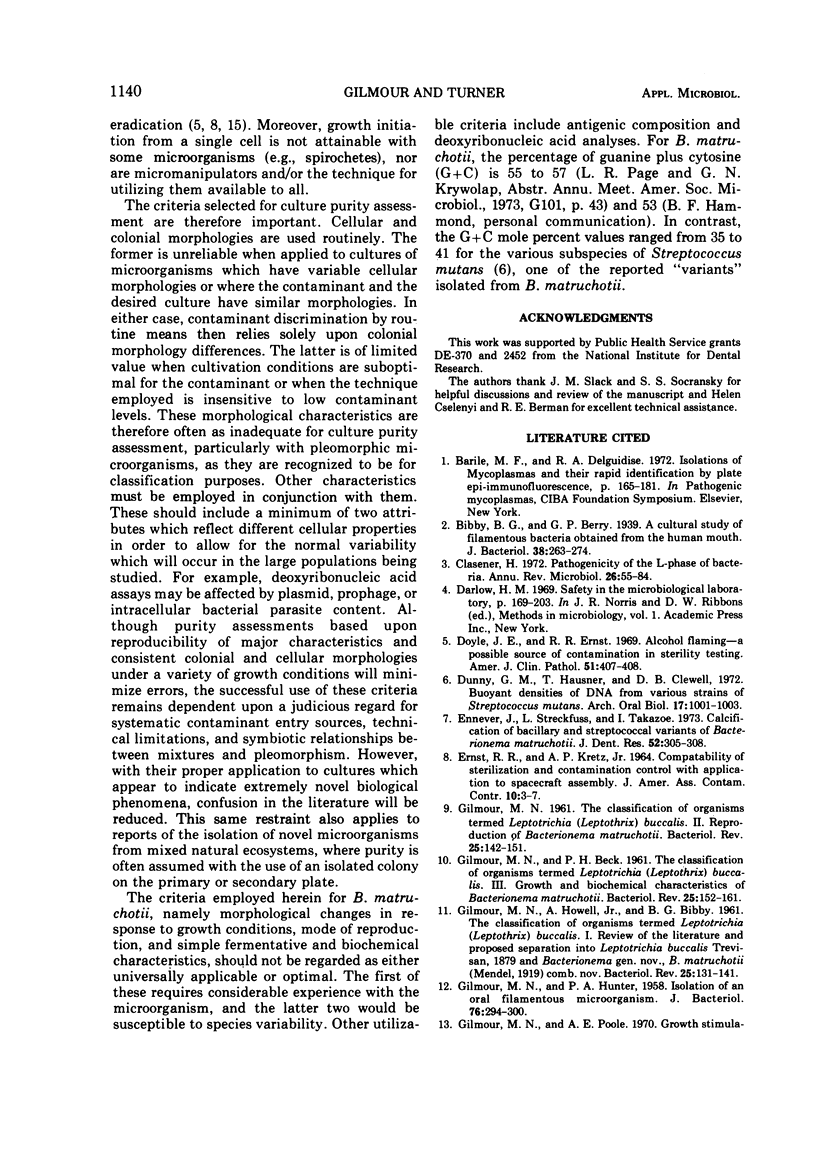
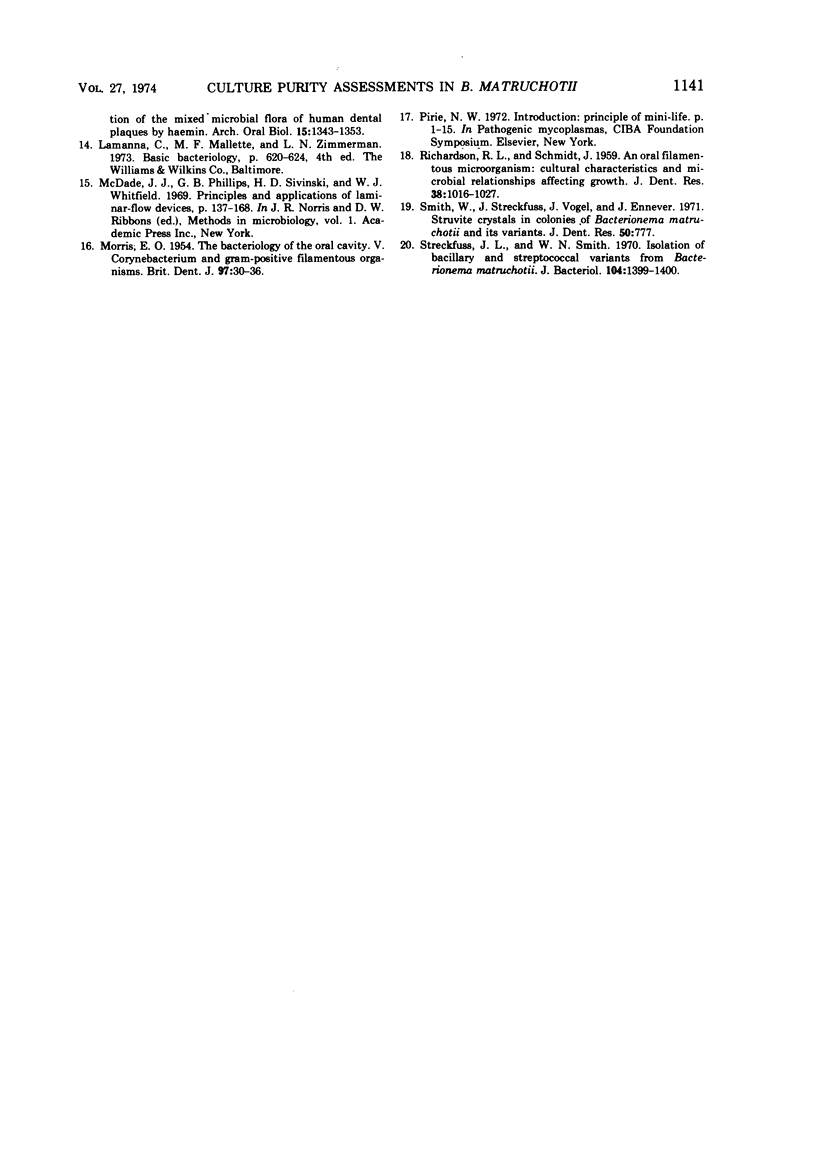
Selected References
These references are in PubMed. This may not be the complete list of references from this article.
- Bibby B. G., Berry G. P. A Cultural Study of Filamentous Bacteria Obtained from the Human Mouth. J Bacteriol. 1939 Sep;38(3):263–274. doi: 10.1128/jb.38.3.263-274.1939. [DOI] [PMC free article] [PubMed] [Google Scholar]
- Clasener H. Pathogenicity of the L-phase of bacteria. Annu Rev Microbiol. 1972;26:55–84. doi: 10.1146/annurev.mi.26.100172.000415. [DOI] [PubMed] [Google Scholar]
- Dunny G. M., Hausner T., Clewell D. B. Buoyant densities of DNA from various strains of Streptococcus mutans. Arch Oral Biol. 1972 Jun;17(6):1001–1003. doi: 10.1016/0003-9969(72)90123-9. [DOI] [PubMed] [Google Scholar]
- Ennever J., Streckfuss J. L., Takazoe I. Calcification of bacillary and streptococcal variants of Bacterionema matruchotii. J Dent Res. 1973 Mar-Apr;52(2):305–308. doi: 10.1177/00220345730520021901. [DOI] [PubMed] [Google Scholar]
- GILMOUR M. N., BECK P. H. The classification of organisms termed Leptotrichia (Leptothrix) buccalis. III. Growth and biochemical characteristics of Bacterionema matruchotil. Bacteriol Rev. 1961 Jun;25:152–161. doi: 10.1128/br.25.2.152-161.1961. [DOI] [PMC free article] [PubMed] [Google Scholar]
- GILMOUR M. N., HOWELL A., Jr, BIBBY B. G. The classification of organisms termed Leptotrichia (Leptothrix) buccalis. I. Review of the literature and proposed separation into Leptotrichia buccalis Trevisan, 1879 and Bacterionema gen. nov., B. matruchotti (Mendel, 1919) comb. nov. Bacteriol Rev. 1961 Jun;25:131–141. doi: 10.1128/br.25.2.131-141.1961. [DOI] [PMC free article] [PubMed] [Google Scholar]
- GILMOUR M. N., HUNTER P. A. Isolation of an oral filamentous microorganism. J Bacteriol. 1958 Sep;76(3):294–300. doi: 10.1128/jb.76.3.294-300.1958. [DOI] [PMC free article] [PubMed] [Google Scholar]
- GILMOUR M. N. The classification of organisms termed Leptotrichia (Leptothrix) buccalis. II. Reproduction of Bacterionema matruchotii. Bacteriol Rev. 1961 Jun;25:142–151. doi: 10.1128/br.25.2.142-151.1961. [DOI] [PMC free article] [PubMed] [Google Scholar]
- Gilmour M. N., Poole A. E. Growth stimulation of the mixed microbial flora of human dental plaques by haemin. Arch Oral Biol. 1970 Dec;15(12):1343–1353. doi: 10.1016/0003-9969(70)90022-1. [DOI] [PubMed] [Google Scholar]
- Smith W., Streckfuss J., Vogel J., Ennever J. Struvite crystals in colonies of Bacterionema matruchotii and its variants. J Dent Res. 1971 May-Jun;50(3):777–777. doi: 10.1177/00220345710500033701. [DOI] [PubMed] [Google Scholar]
- Streckfuss J. L., Smith W. N. Isolation of Bacillary and Streptococcal Variants from Bacterionema matruchotii. J Bacteriol. 1970 Dec;104(3):1399–1400. doi: 10.1128/jb.104.3.1399-1400.1970. [DOI] [PMC free article] [PubMed] [Google Scholar]


